Former Seattle Planning Commissioner Sarah Snider Komppa spent months visiting and comparing 10 North American cities to answer the following questions: What makes dense urban areas attractive to kids and parents? Why do some give up and move to the suburbs? What are the necessary ingredients to support families living downtown? What policy changes do we need to make?
Komppa took the time to answer some questions about what her travels and research in Boston, New York, Brooklyn, Chicago, Denver, Minneapolis, Washington DC, San Francisco, Toronto, and Vancouver BC can teach the Northwest about ingredients for family-friendly cities.
Q: First of all, if I’m someone without kids, why should I read this?
A: Cities that are great for children are great for everybody. Think about what type of transportation system you might want to ride as a young single woman in the city. If it’s safe for a 12-year-old to ride a transit system alone, then it’s probably safe for you. If there’s a neighborhood that’s safe for a ten-year-old to walk across the street and play with his friends and walk home to his apartment building, that park is probably going to be pretty enjoyable for seniors or young professionals in the city.
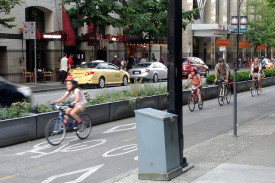
Taking kids’ needs into account and having a mix of ages in a city just enhances its sustainability and longevity over time because you’re not constantly trying to reinvent the wheel—it just works for everyone.
Q: How does kid-friendly housing look different from the condos and apartments more commonly built today?
A: Outdoor communal space—whether that’s a courtyard or rooftop or podium deck—is really important. You need to have some place for kids to be outside. You also need to have indoor community space that’s flexible. In New York, they build internal playgrounds or playrooms and parents or caregivers just come down with the kids. Sound isolation is important, though I would argue that’s important whether you have a barking dog or a screaming baby. Ground floor bike storage is important for singles and young parents, and it also works for strollers too.
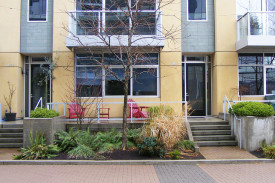
Housing built around courtyards or rowhomes are wonderful because you have semi-private outdoor space but it’s dense enough. Places in Seattle like Ballard and Lower Queen Anne and Capitol Hill are all dense enough to support a mixture of uses. It’s not that you need fifty-story high rises to support family-friendly density. It can be comfortable and still feel like a residential mixed-use neighborhood.
Q: What is the range of experiences for families that choose to live in downtowns?
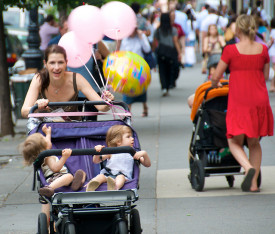
A: Many parents who live downtown say it’s wonderful because there are X number of kids in our building, and the alternative to that that was families who were kind of the lone ranger in the city and who ended up driving to all their playdates. I heard this from a lot of families in Seattle: “We love living downtown but if we ever want our child to interact with other kids, we have to drive somewhere.” So that tipping point with kids is really important.
There are parents who are going to live downtown no matter what, and they’re going to figure it out. But what I heard from many parents who had left the urban core was that it wasn’t one particular thing. It was all the little things. It was the homeless guy who exposed himself to my son and the fact that our neighborhood was noisy. But you also run into those same little things once you move to the suburbs, where some families found life was pretty isolating.
Q: How important is having a public school in a city’s downtown core?
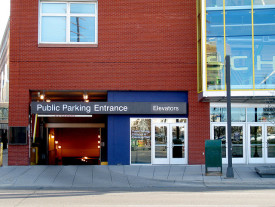
A: Whether you have a good school in your neighborhood was huge. Middle income parents in particular are willing to go to a lot of trouble to ensure their kids have what they see as a good education.
To give you one story, which kind of knocks my socks off, this woman in Chicago lived in a condo on the North Shore and commuted 25 minutes to her job downtown. She felt better about having her kids in a daycare near her in a downtown daycare so they all rode the train in with her. Then a magnet elementary school opened up downtown and was doing well, and they wanted their son to go there. But by the time he was of school age, it had been turned into a neighborhood school. They ended up renting an apartment just to have that address so they could send their son to this downtown school.
I think that highlights two things—one is the expense that some parents are willing to go to and it also highlights the power that redistricting and school assignment policy has.
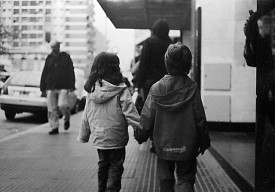
Q: Can you talk a little about the difference between trying to create a safe vs. risk-free experience for kids as they grow up?
A: No one wants children to get hurt, but certainly I think in the US we are such a litigious society. Unlike waterfronts in other countries, we have railings everywhere and we’re very risk-averse, I think to the detriment of being able to grow and learn what risk is. You may encounter some risk with children learning to navigate city streets and traffic, but navigating a bus system or learning how to ride light rail gives a child an independence that he or she may not get until they have a driver’s license living in the suburbs.
Kids growing up in cities also learn to engage with people of different ages and incomes, as opposed to only interacting with their family network and school network. I think they learn to handle situations with strangers, and it just enhances confidence. Now there are examples where there are negatives, certainly, but there are also negatives to suburban living.
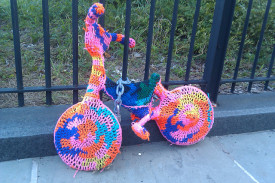
Q: What innovative things have other cities done to draw families with children out of single-family neighborhoods?
I think the family-friendly parks and really interesting playspaces—not just slapping up a swingset but making it an enjoyable place for parents and children and young people and the elderly. Teenagers, in particular, are a really tough crowd. Brooklyn Bridge Park just has these wonderful amazing playgrounds and volleyball courts and programming in and around the old piers. But Chicago and New York have always had kids living downtown so that’s a little different.
For cities that kind of lost that—Seattle and Denver are very similar—the school boards sold off their urban properties, and now there are kids downtown. It’s harder there. But quickly setting up a temporary school in a building to see if that actually attracts people and using that as a landing pad and building on it is a great way of doing it.
Q: What would be your top recommendations for making Seattle’s downtown core more family-friendly?
A: The first would be to create an elementary school downtown. I think it’s a great first step that will help flesh out some of the other issues. The second is getting an organization of parents to advocate for families downtown. I really like the idea of a family village overlay zone centered around schools. Families with kids don’t need to be everywhere, but focusing around schools is a good way to aggregate that. Planning bike infrastructure as if children were actually going to use it would be a good start. The bike lane on Second Avenue is a nightmare even for advanced cyclists.

Q: Which of the cities you visited felt the most family-friendly?
A: I love Vancouver, BC, but it’s too expensive. I actually think Chicago—I would live in one of Chicago’s urban neighborhoods in a heartbeat. Certainly its downtown is dense, but the dense first suburbs with the six-story apartment and brownstone buildings have a nice wonderful feel. The parks are really well integrated, you’ve got great transportation, and the path along the waterfront and lake is great.
Minneapolis was a really cool place to visit, and they have a neighborhood kind of like Capitol Hill that is seeing a lot of development, and they have this amazing off-street bike network. Denver does as well. But Seattle is the densest of those by far, so they’re winning the game there. It’s kind of all these little pieces that have to come together, with schools and family-sized housing and the ability to get around without a car being at the top of the list. I don’t know that any city has all the puzzle pieces completely together.
Note: Sarah Snider Kompaa is an urban designer now living in Denver. Her family-friendly research was made possible, in part, by the 2012 Seattle American Institute of Architects (AIA) Emerging Professionals Travel Scholarship.
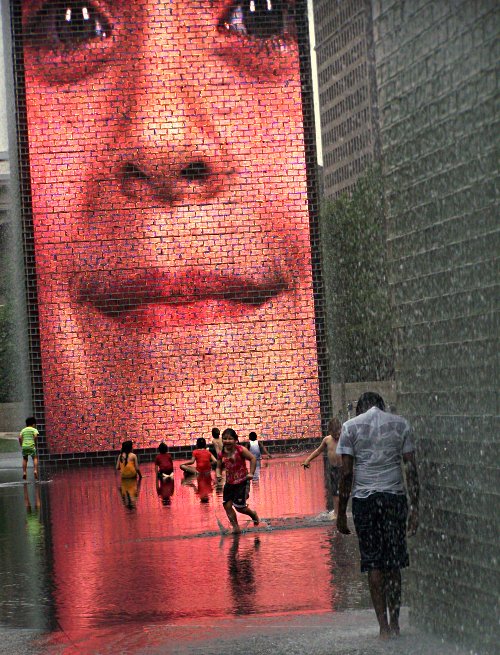

Comments are closed.